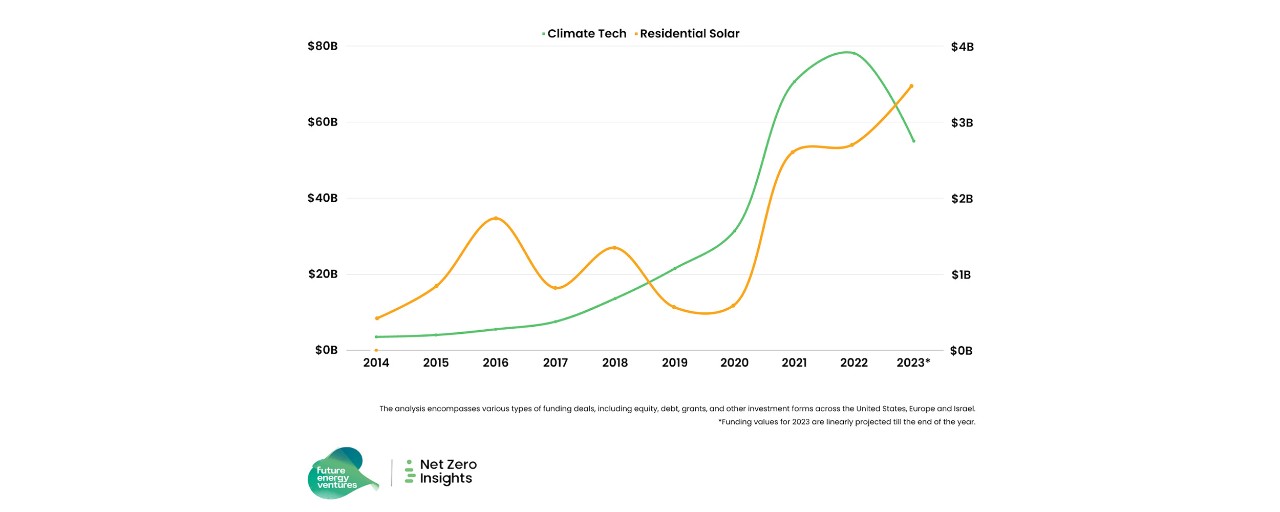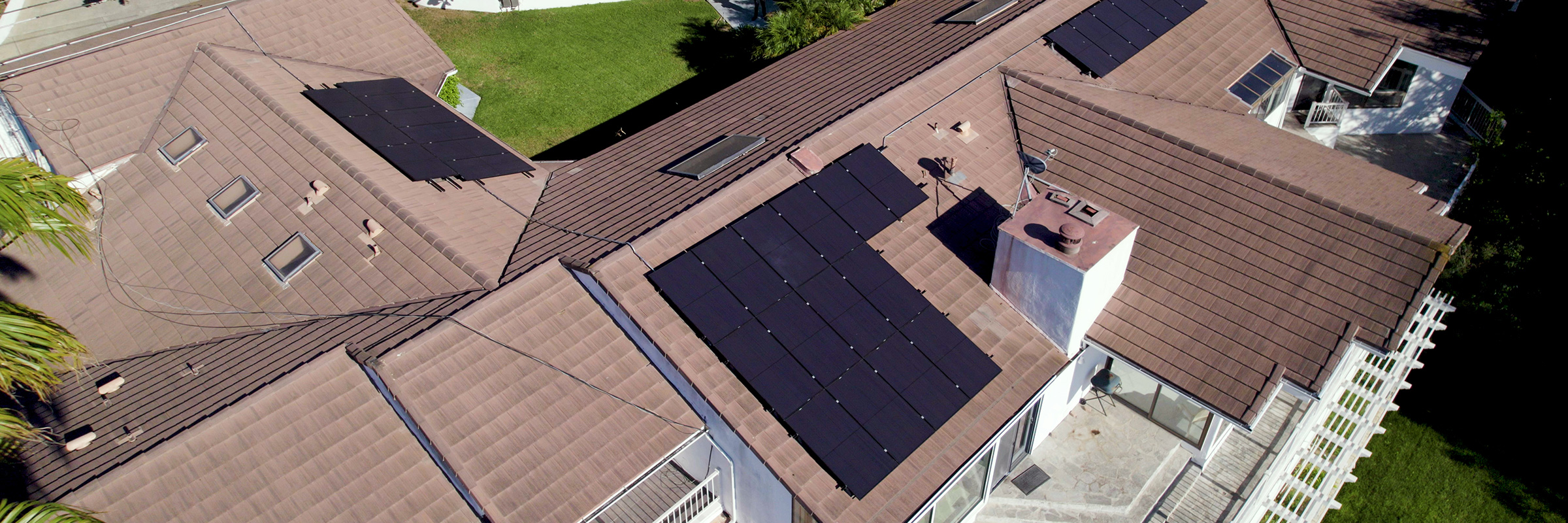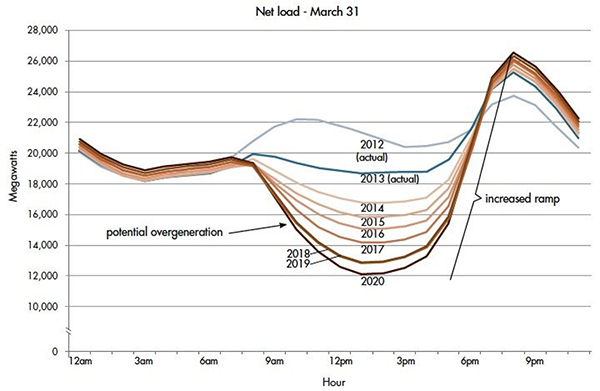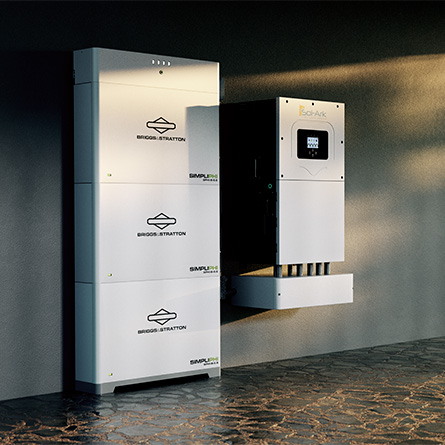According to the Solar Energy Industries Association, in 2024, the US solar industry installed nearly 50 gigawatts of capacity, a 21% increase from 2023. This was the second consecutive year of record-breaking capacity. Additionally, solar accounted for 66% of all new electricity-generating capacity added to the US grid in 2024, as the industry continued experiencing record growth. The graph below shows just how influential Residential PV adoption has been as the driver of all other electrification and climate tech, such as residential battery storage, EV charging, heat pumps, and Home Energy Management Systems. With such growth in solar power, it’s essential to know the basics, how it works, and why battery storage is becoming an even more important part of maximizing its usefulness.

Source: Future Energy Ventures

The Basics of Solar Power
It is important to understand the differences between solar and photovoltaic (PV) energy to understand solar energy. Solar power is energy from the sun that is converted into thermal or electrical energy. Solar energy is the cleanest and most abundant renewable energy source available, and the U.S. has some of the richest solar resources in the world. Solar technologies can utilize this energy for various uses, including generating electricity, providing light or a comfortable interior environment, and heating water for domestic, commercial, or industrial use.
PV materials and devices convert sunlight into electrical energy. This energy can power everything from small electronics to road signs, homes, and large commercial businesses.
A single PV device is known as a cell. An individual PV cell is usually small, producing 3-5 watts of power. To boost the power output of PV cells, they are connected in chains to form larger modules or panels. Modules can be used individually, or several can be connected to form arrays. One or more arrays can be connected to the electrical grid as part of a complete PV system or stand-alone, off-grid. Because of this modular structure, PV systems can be built to meet almost any electrical power need, small or large.

Understanding the basics of solar power is just the beginning. Now, let’s explore why so many homeowners are making the switch to solar energy and how it’s transforming their lives.
Why are so many homeowners adopting solar power?
The steep and rapid adoption of solar power is a result of the following benefits homeowners are finding:
Sunlight is an infinite resource. Its rays can be harvested repeatedly for energy without depleting the source.
Lower electric bills. As a replacement for grid-tied properties (anywhere with access to power lines), solar power costs just a fraction of what you pay the utility company each month. An appropriately sized system can drop your electric bill to nearly $0, as most utilities charge a flat fee for grid connection, often around $10 per month.
Remote power. If you live in a remote location, running power lines to your house may be too expensive or impossible. Solar power systems generate energy when you can’t hook into the grid.
Improve property value. A 2025 report from Solar Insure used a cross section of solar-powered California homes that showed homes with owned solar panels sold for 5-10% more than comparable homes without solar panels.
Leveraging current incentives. Local, utility, state, and government programs for incentivizing solar adoption won’t last forever, so homeowners who want to pay less to adopt a system today are jumping in before incentives go away.
What are the different configurations for solar power systems?
When looking into solar power, there are three different systems to choose from: grid-tied, off-grid, or hybrid.
Grid-tied systems save more on your electric bill. It’s less expensive than buying electricity from a utility company.
Off-grid solar delivers power to remote properties without easy access to power lines. Although they cost more (due to the addition of batteries), their main value is delivering power to a remote location. Running power lines to an off-grid home is typically more expensive than installing an off-grid system.
A hybrid of the first two systems connects to the grid and includes batteries. Solar companies refer to these as either battery backup or energy storage systems. There are three main benefits:
Store backup power in case of outages. This is useful if you live in an area with an unreliable power grid or severe weather.
Store energy so you can use it to sell it later, which is useful if you live in an area with time-of-use rates, high demand charges, or no net metering.
Take advantage of both storing energy for backup power or to sell it later
Now that we’ve explored some solar 101s, let’s understand why the rapid adoption of solar has created what is called “The Duck Curve.”

Rapid solar adoption and “The Duck Curve”
"The Duck Curve" shows us the great supply of solar power, which peaks midday, and the demand curve, which peaks after 5 p.m. or when the sun goes down. Utilities experience difficulties when excess solar energy cannot be incorporated into the grid because it is being mass-produced at a time when it is not needed and unavailable at peak times when it is needed.
Source: The Department of Energy
Net metering moves toward correcting the “The Duck Curve”
The California Public Utilities Commission's earlier Net Energy Metering (NEM) regulations, NEM 1.0 and NEM 2.0, heavily incentivized solar installations by allowing homeowners to sell excess energy generated by their solar panels back to the grid at the total retail rate. This led to a rapid adoption of solar power across the state. However, this surge in solar energy production created the "Duck Curve," where utility companies received abundant solar power during midday when demand was low and then faced a shortfall in the evening when demand increased. Utilities were paying for surplus solar energy that was not needed during the day, which posed challenges for grid management.
The introduction of NEM 3.0 marked a significant shift to address this issue. The focus moved from solely incentivizing solar installations to encouraging projects that paired solar with battery storage. By promoting battery storage, NEM 3.0 aims to utilize the excess midday solar energy and store it for use during the evening when demand peaks, thus alleviating the pressure on the grid. This approach not only helps to balance supply and demand more effectively but also enhances the overall resilience and efficiency of the energy system in California. The benefits of this new policy are clear, providing reassurance about the future of energy management. This is the reason you are seeing more incentives toward battery storage. It’s not just a great new technology being adopted; it’s essential for the next stages of renewable energy efficacy.
As net metering policies evolve to address these challenges, battery storage emerges as a critical component, helping balance supply and demand. Recent incentives are also making battery storage more accessible.
Battery storage incentives
The landmark Inflation Reduction Act (ITC) boosted the adoption of battery storage by providing a 30% investment tax credit (ITC) for battery storage systems. The economics are rapidly evolving with proposed changes to the ITC currently making their way through Congress. The changes currently being proposed would halt qualification for tax rebates by the end of this year instead of the original sunset of 2032.
Californians who reside in fire zones and fulfill other qualifying conditions are also eligible for battery storage incentives under the Self-Generation Incentive Program (SGIP), which can return up to 100% of the project's total cost. The SGIP refund is divided into three categories, with incentive amounts per installed kilowatt-hour of battery storage.
Currently, commercial and residential owners in California are qualified for an additional 20% SGIP incentive on the cost of Briggs & Stratton SimpliPHI® battery storage systems because they are manufactured in California.
The influx of battery storage incentives proves that battery storage is the ideal complement to solar power, both for individual resilience and grid support. You can learn more about the battery storage incentives in your area by visiting the DSIRE website here.
TOU rates
Homeowners can optimize time-of-use (TOU) rates by pairing solar panels with battery storage. During the day, TOU rates are typically lower when your solar panels are generating electricity. This excess power can be stored in your battery and discharged during peak-rate periods, helping you save money.
Understanding TOU rates is key to maximizing your solar and battery investment. However, another crucial aspect of solar power is its performance during power outages. Let’s address some homeowners' top questions about solar energy and power reliability.

Top questions about solar and power outages
These are some of the top questions about solar power related to power outages, which can most often be solved with the addition of a battery storage system.
What are the main sources of weather-related power outages?
In the U.S., 80% of power outages are caused by weather events, such as severe weather (58%), winter storms (23%), and tropical cyclones, including hurricanes (14%).

Source: Climate Central
According to research, non-weather-related outages typically last only two hours and are often caused by a small, localized accident, such as a tree falling or a car accident.
What would happen if you have solar and the power goes out?
When the grid power fails, a grid-tied solar system will not work unless you have a backup battery system. The U.S. electrical code requires solar systems to shut down quickly during outages to protect first responders and prevent potentially dangerous backfeed currents from entering the distribution lines. To avoid a blackout during a power outage, a battery storage system will isolate from the grid and automatically begin to discharge, providing your home with electricity.
The National Electrical Code (NEC) mandates this rapid shutdown for solar photovoltaic systems as a crucial safety measure. This requirement means that your solar system cannot operate during blackouts without a battery backup, so installing a solar battery is essential to maintaining power during such events.
In these situations, an appropriately sized battery system ensures that your home receives electricity during an outage. This emphasizes the importance of having a battery system tailored to your home's energy needs.
In Texas, more people are adopting solar energy and storage. Compared to 2022, Texas's solar generation increased by 35% in 2023. With over 23 GW installed, ERCOT, the state's main grid operator, is expected to add 24 GW more between 2024 and 2025, according to EIA experts.
Texans are turning to solar energy and battery storage because of harsh weather and dangerously long power outages in extreme heat and cold weather. Homeowners in Texas are also moving toward self-reliance because of the availability of tax benefits and financial incentives that make it a more affordable option.
What is the solution to solar going down in a power outage?
Pairing a solar energy system with battery storage ensures your power remains on during an outage. As soon as the grid power has shut down, the battery storage automatically kicks in and starts supplying power. This automated backup feature allows you to continue using essential appliances until the grid power is restored.
Can a solar battery run the whole house?
The simple answer is yes; home battery systems can power the whole house. They can also be used to power differing loads. You will need to understand your home’s energy consumption in kWh and power demand in kW. Then, determine the size of the solar, inverter, and battery you will need to achieve a whole home backup. You can learn more about the various levels of battery storage support a home can have with the SimpliPHI 6.6 Battery Packages here.
As solar continues to grow, homeowners must stay informed about the evolving landscape of net metering. States increasingly adopt NEM incentives that favor battery storage inclusion with solar. By taking advantage of paired installs and current incentives, you can maximize your energy savings, enhance your home’s resilience during power outages, and contribute to a more balanced energy system for your home.

Ready to experience true energy independence?
Request a consultation with a Briggs & Stratton dealer or installer near you by clicking the button below.



